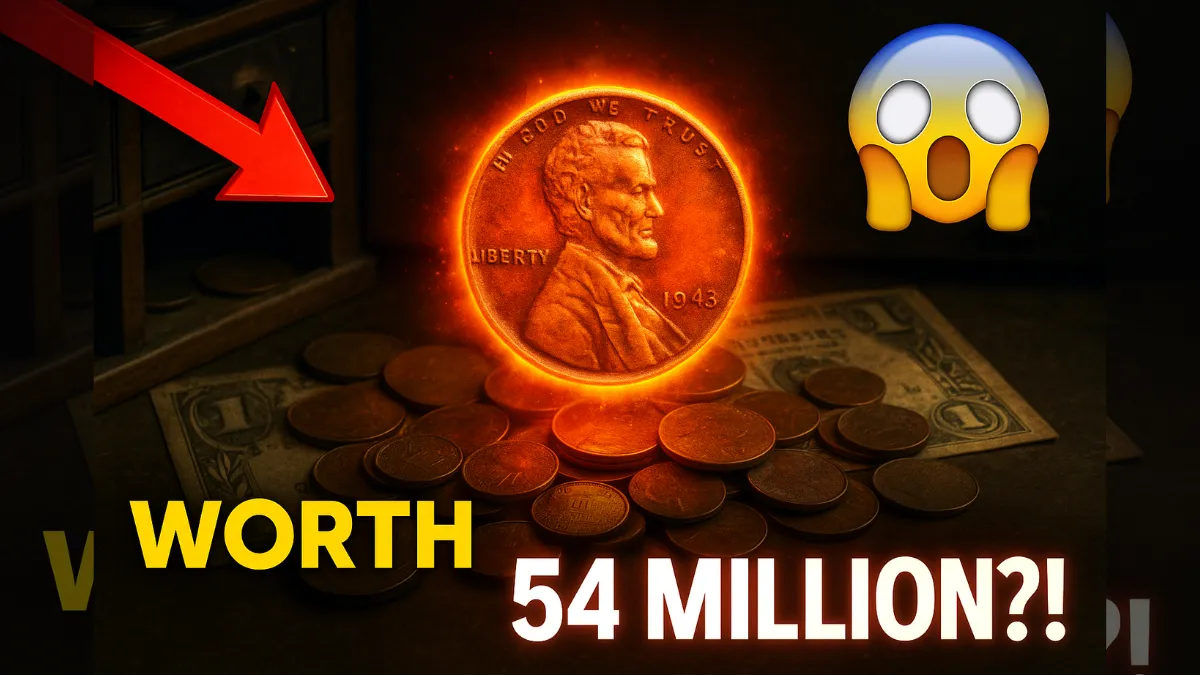Imagine reaching into your pocket and pulling out a penny that could erase your debt—or buy you a luxury home. Sounds far-fetched, right? But that’s exactly the kind of magic tied to one of America’s rarest coins: the 1943 copper penny.
Though it looks like an ordinary coin, this little copper disc has become a legend among collectors and treasure hunters alike. And if you’re lucky enough to stumble upon one, it could turn out to be a life-changing discovery.
Wartime Sacrifice and a Coining Mistake
Back in 1943, with World War II in full swing, copper was urgently needed for the war effort—especially for producing ammunition and equipment. To conserve resources, the U.S. Mint temporarily switched the penny’s material from copper to zinc-coated steel. These “steelies” had a distinctive silver tone and were produced in the hundreds of millions.
But amidst this transition, a few leftover copper blanks—called planchets—were mistakenly used in the minting process. The result? A handful of authentic 1943 copper pennies made it into circulation entirely by accident.
A Hidden Treasure Revealed
The existence of these copper pennies went unnoticed at first. It wasn’t until 1947 that a Massachusetts teenager, Don Lutes Jr., found one in his change. Initially dismissed as a mistake or a hoax, these pennies were eventually confirmed to be real—struck in error during the Mint’s 1943 production.
Today, only about 40 verified examples are known. Most were minted in Philadelphia, with even rarer versions coming out of the Denver and San Francisco mints—marked as 1943-D and 1943-S, respectively.
How to Identify a Real 1943 Copper Penny
With values climbing into the hundreds of thousands—and sometimes even millions—counterfeits abound. Here’s how to spot the real deal:
- No magnetism: Steel sticks to magnets; copper doesn’t.
- Weight check: Genuine copper pennies weigh 3.11 grams, heavier than steel ones.
- Not just plated: Real 1943 copper cents are solid copper, not steel coated in copper.
- Correct markings: Look for accurate period details and clean, untampered edges.
Still, even with these signs, serious collectors always turn to trusted grading services like PCGS or NGC to confirm authenticity.
Big Money for a Tiny Coin
While stories about 1943 copper pennies selling for $54 million are false, their actual value is still jaw-dropping:
- $1.7 million – A pristine coin from the Simpson Collection (2010)
- $1 million – For a 1943-D version, one of the rarest known
- $282,000 – The price for a 1943-S penny in 2018
- $204,000 – Don Lutes Jr.’s penny sold for this in 2019
Even circulated examples, depending on condition, can bring in six figures.
The People and Stories Behind the Coin
Don Lutes Jr. held on to his lucky find for over 70 years. Another specimen belonged to Louis Eliasberg, a legendary collector who assembled a complete set of every U.S. coin ever made. These coins aren’t just rare—they’re historical artifacts tied to some of the biggest names in numismatics.
The Hunt Continues
Since the 1940s, countless Americans have searched through coin jars, attics, and old dressers hoping to find one of these elusive copper cents. And believe it or not, a few have turned up in circulation. That slim possibility keeps the dream alive.
More Than a Coin—A Cultural Icon
Beyond its financial value, the 1943 copper penny represents a unique slice of American history. It’s a symbol of wartime necessity, a minting mishap, and the power of everyday objects to hold extraordinary worth.
Debunking Popular Myths
- Henry Ford never promised a car for one of these pennies.
- No, they’ve never sold for $54 million—despite viral stories.
- They are not common; only about 40 are confirmed.
- DIY tests help, but expert authentication is essential.
Why It Still Captures Our Imagination
For collectors, the 1943 copper penny is the ultimate prize—a mix of rarity, mistake, and history. As more coins disappear into private hands, their value continues to climb. Experts say the next high-grade sale could easily pass $2 million.
Final Thought: Always Check Your Change
That old penny in your drawer could be a priceless mistake. So next time you’re sifting through spare change, take a second look—because hidden among the ordinary might be one of America’s rarest treasures.
FAQs
How can I tell if my 1943 penny is real copper?
Check if it sticks to a magnet. Copper doesn’t. Also, a real one weighs about 3.11g and should be verified by a grading service.
Why were most 1943 pennies made of steel?
During WWII, copper was needed for war supplies, so the U.S. Mint used steel coated in zinc to conserve the copper supply.
How much is a 1943 copper penny worth?
Depending on condition and mint mark, it can sell from hundreds of thousands to over a million dollars at auction.
Are there a lot of fake 1943 copper pennies?
Yes—many fakes exist. Some are copper-plated steel, others altered. Only professional authentication can confirm the real deal.

